On June 9, Nature – widely considered the most prestigious journal in life sciences – began the process of reconciling the systemic racism inherent in science with a simple, but important statement:
We recognize that Nature is one of the white institutions that is responsible for bias in research and scholarship. The enterprise of science has been — and remains — complicit in systemic racism, and it must strive harder to correct those injustices and amplify marginalized voices.
Many scientists on Twitter expressed surprise over this admission, claiming the apolitical nature of science prevents the racial injustice described in Nature’s statement. However, evidence of racial inequality is painfully apparent in science. In 2018, only 4.6% of doctorate recipients in the life sciences were Black. For chemistry, this drops further to 2.7%. Black scientists are also less likely to be awarded research grants from the National Institutes of Health, despite a higher likelihood of proposing research applicable to community health over fundamental science, and are likely to have their work cited less frequently.
A product of this ongoing racial inequality is the erasure of Black achievements from science history. While only just scratching the surface, here is a list of five excellent Black scientists you should know:
- Marie Daly, Ph.D.
Marie Daly was the first Black American woman to receive a Ph.D. in chemistry in the United States, earning her doctorate from 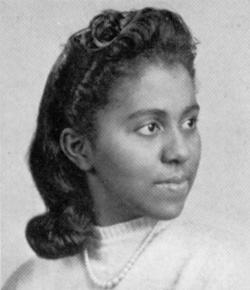 Columbia University in 1947. A second generation American, Dr. Daly was both a fellow of the American Association for the Advancement of Science and named one of the Top 50 Women in Science, Technology, Engineering, and Mathematics in 1999, despite retiring 13 years prior. Dr. Daly’s work contributed to both fundamental and health related biochemistry. In 1950, three years before the now famous unveiling of DNA’s structure by James Watson and Francis Crick, Dr. Daly’s research asserted that nucleic acids consisted of only adenine, guanine, thymine, and cytosine, and that the previously proposed hypothesis that the nucleotides were present in equal abundance was incorrect. Three years later, her research correlated the amount of RNA present in tissues to the rate of protein synthesis, helping to begin the central dogma of biology— that DNA leads to RNA and then proteins—which was cited in Watson’s Nobel Prize speech as a contributing factor to his work. Her later research focused on human health, where her research was the first to connect cholesterol and clogged arteries.
Columbia University in 1947. A second generation American, Dr. Daly was both a fellow of the American Association for the Advancement of Science and named one of the Top 50 Women in Science, Technology, Engineering, and Mathematics in 1999, despite retiring 13 years prior. Dr. Daly’s work contributed to both fundamental and health related biochemistry. In 1950, three years before the now famous unveiling of DNA’s structure by James Watson and Francis Crick, Dr. Daly’s research asserted that nucleic acids consisted of only adenine, guanine, thymine, and cytosine, and that the previously proposed hypothesis that the nucleotides were present in equal abundance was incorrect. Three years later, her research correlated the amount of RNA present in tissues to the rate of protein synthesis, helping to begin the central dogma of biology— that DNA leads to RNA and then proteins—which was cited in Watson’s Nobel Prize speech as a contributing factor to his work. Her later research focused on human health, where her research was the first to connect cholesterol and clogged arteries.
- Ernest Just, Ph.D.
You have probably heard the phrase that “the whole is greater than the sum of its parts.” But did you know it originated with a Black 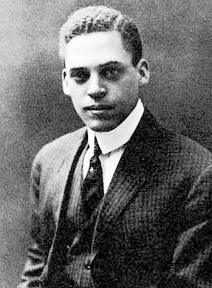 early 20th century biologist? Despite living in the era of Jim Crow where “separate but equal” was a rallying cry for lawful racial discrimination, Dr. Just graduated from Dartmouth College as the only graduate earning magna cum laude in 1907. He later went on to complete his doctorate in zoology from the University of Chicago, during which the NAACP awarded him the first ever Spingarn Medal for excellent achievement by an African American. Dr. Just spent 34 years as professor at Howard University, 29 of which he was the Chair of the Department of Zoology. He published more than 70 papers over his career through which he openly challenged reductionist biologists who believed the mechanisms of individual cells to be appropriate representation of the full organism. Dr. Just was one of the first researchers to suggest that the outside of the cell membrane contain molecules able to sense and react to external stressors. This discovery has led to scientific fields still studied today, including the study of protein receptors and glycoscience. Following his death in 1941, Science printed an obituary written by his doctoral advisor that, on top of calling Dr. Just his “student, collaborator, and friend,” also noted that he was likely the best Black biologist the U.S. had ever had.
early 20th century biologist? Despite living in the era of Jim Crow where “separate but equal” was a rallying cry for lawful racial discrimination, Dr. Just graduated from Dartmouth College as the only graduate earning magna cum laude in 1907. He later went on to complete his doctorate in zoology from the University of Chicago, during which the NAACP awarded him the first ever Spingarn Medal for excellent achievement by an African American. Dr. Just spent 34 years as professor at Howard University, 29 of which he was the Chair of the Department of Zoology. He published more than 70 papers over his career through which he openly challenged reductionist biologists who believed the mechanisms of individual cells to be appropriate representation of the full organism. Dr. Just was one of the first researchers to suggest that the outside of the cell membrane contain molecules able to sense and react to external stressors. This discovery has led to scientific fields still studied today, including the study of protein receptors and glycoscience. Following his death in 1941, Science printed an obituary written by his doctoral advisor that, on top of calling Dr. Just his “student, collaborator, and friend,” also noted that he was likely the best Black biologist the U.S. had ever had.
- Percy Julian, Ph.D.
Percy Julian was the first Black American inducted into the National Academy of Sciences. The grandson of enslaved persons, Dr. 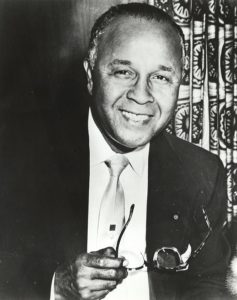 Julian’s prolific career was nearly cut short after Harvard retracted his teaching fellowship to appease white students. However, after taking a leave of absence from his faculty post at Howard University, he earned his doctorate from the University of Vienna. Throughout his career as an organic chemist, Dr. Julian was a trailblazer in organic synthesis, beginning with the first synthesis of physostigmine, a naturally occurring steroid now used to treat glaucoma; this achievement is listed as one of the top 25 achievements in American chemistry. Dr. Julian spent some of the most productive years of his career at Glidden, a pharmaceutical company, where he designed scale-up protocols enabling the efficient synthesis of steroid compounds still used frequently today. His pioneering research is credited for the affordable medications for rheumatoid arthritis and other diseases, leading him to be listed among the 20 inventors who changed the world. Despite being the recipient of many prestigious awards and honorary degrees throughout his life, the persistent racial discrimination weighed heavy on Dr. Julian, preventing him from achieving his personal goals. Reflecting on his retirement, he said, “I feel that my own good country robbed me of the chance for some of the great experiences that I would have liked to live through. Instead, I took a job where I could get one and tried to make the best of it. I have been, perhaps, a good chemist, but not the chemist that I dreamed of being.”
Julian’s prolific career was nearly cut short after Harvard retracted his teaching fellowship to appease white students. However, after taking a leave of absence from his faculty post at Howard University, he earned his doctorate from the University of Vienna. Throughout his career as an organic chemist, Dr. Julian was a trailblazer in organic synthesis, beginning with the first synthesis of physostigmine, a naturally occurring steroid now used to treat glaucoma; this achievement is listed as one of the top 25 achievements in American chemistry. Dr. Julian spent some of the most productive years of his career at Glidden, a pharmaceutical company, where he designed scale-up protocols enabling the efficient synthesis of steroid compounds still used frequently today. His pioneering research is credited for the affordable medications for rheumatoid arthritis and other diseases, leading him to be listed among the 20 inventors who changed the world. Despite being the recipient of many prestigious awards and honorary degrees throughout his life, the persistent racial discrimination weighed heavy on Dr. Julian, preventing him from achieving his personal goals. Reflecting on his retirement, he said, “I feel that my own good country robbed me of the chance for some of the great experiences that I would have liked to live through. Instead, I took a job where I could get one and tried to make the best of it. I have been, perhaps, a good chemist, but not the chemist that I dreamed of being.”
- Gladys West, Ph.D.
GPS systems are so intrinsically knit into our lives that it is hard to remember a time that we couldn’t ask our phone for directions to the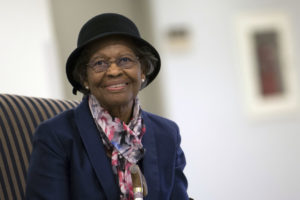 nearest Starbucks, or – dare I say it – have to use a paper map. But few people know that the mathematical basis for the global positioning system originated from the work of mathematician Gladys West, one of four Black employees of the 1950s Naval Surface Warfare Center. While initially conducting all of her work by hand, she spent the 1970s and 80s programming computers to calculate the geoid, the name for the precise shape of the earth, through meticulous considerations of gravitational, tidal, and other Earth forces contributing to its distorted shape. Dr. West’s designed and implemented highly complex computer algorithms that cut the original processing time in half and led to the launching of the Seasat, the first satellite designed for remote sensing. After working for the Naval Surface Warfare Center for 42 years, Dr. West retired in 1998, after which she enrolled at Virginia Tech and completed a Ph.D. in Public Administration. In 2018, she was inducted in the United States Air Force Hall of fame, where she was noted as a “Hidden Figure” whose work impacted the world for decades after.
nearest Starbucks, or – dare I say it – have to use a paper map. But few people know that the mathematical basis for the global positioning system originated from the work of mathematician Gladys West, one of four Black employees of the 1950s Naval Surface Warfare Center. While initially conducting all of her work by hand, she spent the 1970s and 80s programming computers to calculate the geoid, the name for the precise shape of the earth, through meticulous considerations of gravitational, tidal, and other Earth forces contributing to its distorted shape. Dr. West’s designed and implemented highly complex computer algorithms that cut the original processing time in half and led to the launching of the Seasat, the first satellite designed for remote sensing. After working for the Naval Surface Warfare Center for 42 years, Dr. West retired in 1998, after which she enrolled at Virginia Tech and completed a Ph.D. in Public Administration. In 2018, she was inducted in the United States Air Force Hall of fame, where she was noted as a “Hidden Figure” whose work impacted the world for decades after.
- Jane Hinton, DVM
Anyone who has worked with bacteria can sense the smell of agar plates from across a 50 ft lab. However, the source of the smell – Mueller Hinton broth – has enabled countless bacterial studies, and is considered the “gold standard” for antibiotic testing. At the time 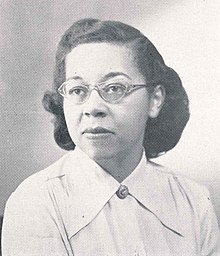 of its publication in 1941, Dr. Hinton was only 22 years old! While working as a lab technician at Harvard University in 1941, Dr. Hinton developed the revolutionary media after determining that starch, not protein, was necessary for the proliferation of bacteria. Believing the starch worked as a detoxifying agent, Hinton observed higher growth rates and more easily discerned colonies compared to those grown on Difco Proteose Chocolate Agar, a dark agar media used commonly at the time. While Dr. Hinton intended the media to be used as a diagnostic for detecting and treating gonorrhea, the ability to autoclave the media paired with its relative translucence made it a key tool for the investigation of novel antibiotics, where it is still used today. The granddaughter of enslaved persons, Dr. Hinton shifted careers to become one of the two first Black recipients of Doctorates of Veterinary Medicine in 1949. After working as a small animal veterinarian, Dr. Hinton became a government inspector with the Department of Agriculture in Massachusetts, where she helped to research and treat livestock disease until she retired in the 1980s.
of its publication in 1941, Dr. Hinton was only 22 years old! While working as a lab technician at Harvard University in 1941, Dr. Hinton developed the revolutionary media after determining that starch, not protein, was necessary for the proliferation of bacteria. Believing the starch worked as a detoxifying agent, Hinton observed higher growth rates and more easily discerned colonies compared to those grown on Difco Proteose Chocolate Agar, a dark agar media used commonly at the time. While Dr. Hinton intended the media to be used as a diagnostic for detecting and treating gonorrhea, the ability to autoclave the media paired with its relative translucence made it a key tool for the investigation of novel antibiotics, where it is still used today. The granddaughter of enslaved persons, Dr. Hinton shifted careers to become one of the two first Black recipients of Doctorates of Veterinary Medicine in 1949. After working as a small animal veterinarian, Dr. Hinton became a government inspector with the Department of Agriculture in Massachusetts, where she helped to research and treat livestock disease until she retired in the 1980s.
Author’s note: This article was inspired, in part, by Dr. Adrianne Gladden-Young’s article in The Atlantic, where she details how the effects of inequalities in Black-led research funding have been exposed by the COVID-19 crisis. To better understand the struggles of the Black academic community, I highly suggest you take the time to follow and read the posts tagged #BlackintheIvory on Twitter. Additionally, I suggest reading the column by Dr. Neil Lewis, Jr. in Science.
It is on all of us to create an anti-racist community.
Peer edited by Connor LaMontagne